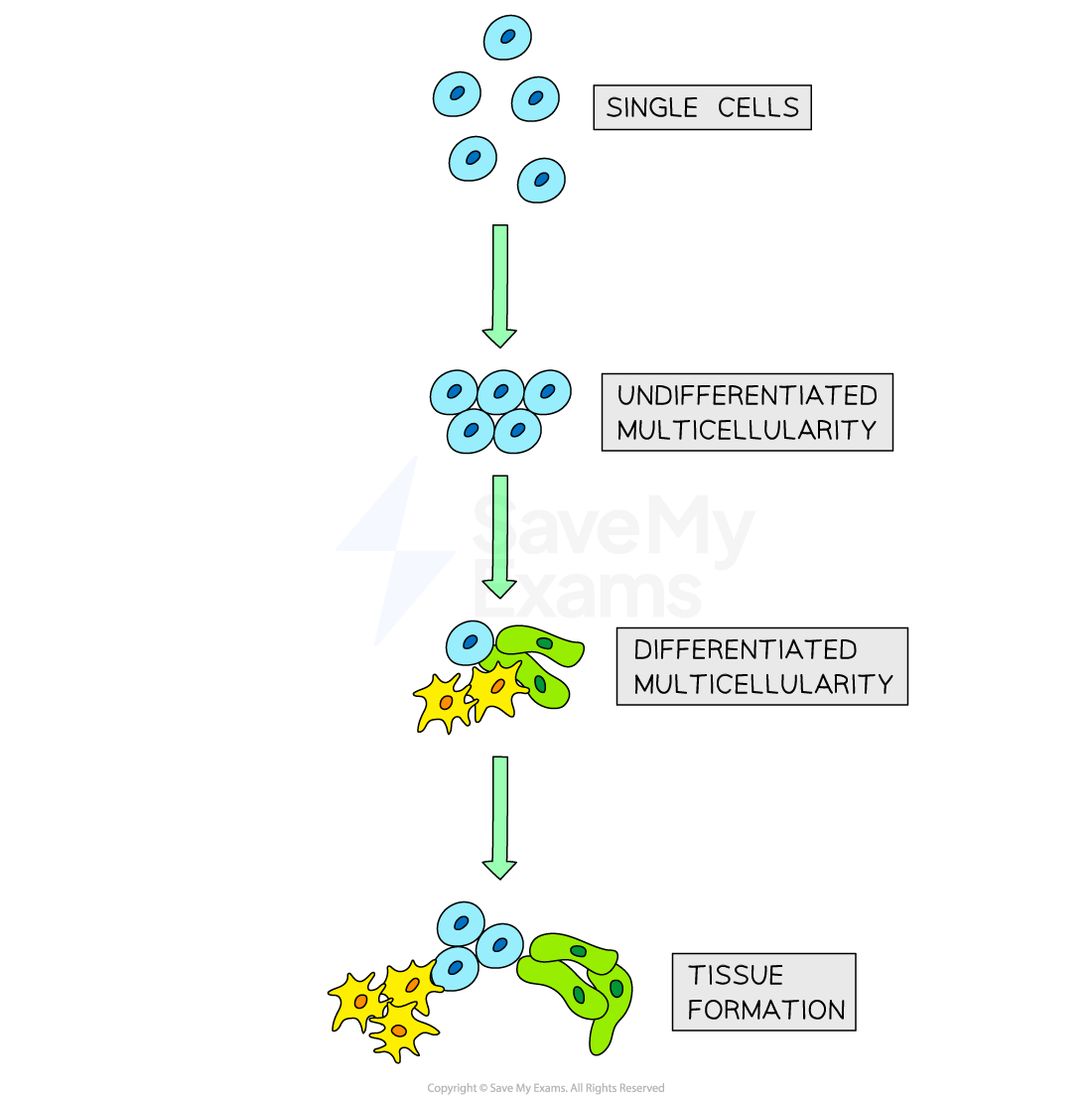Multicellularity (DP IB Biology): Revision Note
Multicellularity
In multicellular organisms, specialised cells of the same type group together to form tissues
A tissue is a group of cells that work together to perform a particular function
Examples of this include the following:
Epithelial cells group together to form epithelial tissue (the function of which, in the small intestine, is to absorb food)
Muscle cells (another type of specialised cell) group together to form muscle tissue (the function of which is to contract in order to move parts of the body)
Different tissues work together to form organs
Examples of this include the following:
The heart is made up of many different tissues (including cardiac muscle tissue, blood vessel tissues and connective tissue, as well as many others)
Different organs work together to form organ systems
Organ systems work together to carry out the life functions of a complete organism
Levels of Organisation in Humans Table
Specialised cell | Tissue | Organ | Organ system |
|---|---|---|---|
Epithelial cell | Epithelial tissue (made up of epithelial cells) | Stomach (made up of epithelial tissue, muscle tissue and glandular tissue) | Digestive system (made up of numerous organs involved with digestion and absorption of food, including the stomach, liver, small and large intestine) |
Muscle cell | Muscle tissue (made up of muscle cells) | Bladder (made up of smooth muscle tissue, epithelial tissue, fatty tissue and connective tissue) | Urinary system (made up of the bladder, kidneys, ureters and urethra) |
Neurones (nerve cells) | Nerve tissue (made up of nerve cells) | Brain (made up of grey matter tissue, white matter tissue and blood vessel tissue) | Central nervous system (made up of the brain and spinal cord) |
Rod cells and cone cells | Retina (made up of rod and cone cells) | Eyes (made up of many tissues including the retina, sclera and cornea) | Visual system (made up of the eyes, optic nerves and visual cortex of the brain) |
Cells, tissues and organs have developed in multicellular organisms to help coordinate and communicate with each other
This means that organisms that possess multicellularity can thrive in most environments
Other advantages of multicellularity includes:
It allows for organisms to grow larger in size
Cell specialisation can occur so that groups of specialised cells can perform specific functions
The evolution of multicellularity is thought to have occurred in stages
First single celled organisms over time, clumped together
These clumps or aggregates, started forming specialised cells, particularly reproductive cells
The groups of specialised cells began to fold to create tissues and then became more complex to form organs
The evolution of multicellularity diagram

Multicellularity evolved in stages over millions of years
The evolution of multicellularity appears to have occurred many times throughout history
Many species of fungi and algae, which evolved before animals and plants, are multicellular
The evolution of multicellularity diagram

Evolution of multicellularity has occurred many times throughout history as evidence of multicellularity in fungi and plants predates animals and plants

Unlock more, it's free!
Did this page help you?